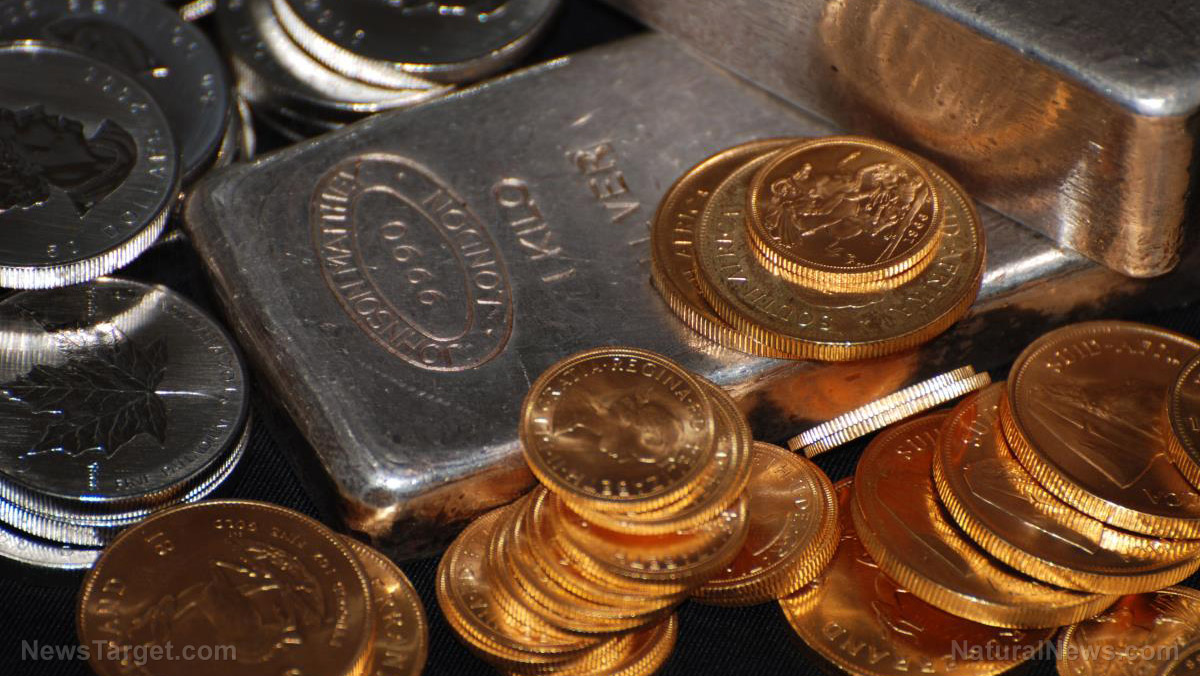Holdings in Gold-Backed ETFs Grew 14% in 2019, Hit All-Time Highs
by Peter Schiff, Schiff Gold:

Net inflows of gold into gold-backed ETFs came in at 400.3 tons in 2019, according to data released by the World Gold Council. ETF gold holdings grew by 14% last year and finished at 2881.2 tons.
Overall, global gold-backed assets under management grew by 37% in US dollars due to positive demand and an 18% increase in the price of gold.
ETF gold-holdings reached a record 2,900 tons in the fourth quarter. The previous record for ETF gold holdings was set back in 2012 when the price of gold was near $1,700 per ounce.
North American funds led regional inflows with an addition of 206 tons. That represented a 14.4% increase year-on-year. The WGC cited growing geopolitical tensions and the first Federal Reserve rate cuts in a decade as reasons for the rush to gold.
European funds experienced inflows of 188 tons, a 13.6% y-o-y increase. England-based ETFs led the way due to uncertainty over Brexit and the resulting political chaos. German fund also saw a healthy 13% increase in gold holdings, primarily driven by negative yields.
Asian funds finished the year relatively flat, with 0.1-ton outflows.
Funds in other regions grew by 16.3%. adding 6.3 tons of the yellow metal. Most of this growth came from Australia-listed funds.
In 2019, the price of gold hit all-time highs in every major G10 currency apart from the US dollar and Swiss franc. Global trading volumes rose 27% y-o-y to $145 billion per day in 2019. That was up from $114 billion per day in 2018. According to the WGC:
The strength of gold was mainly the by-product of a dovish shift in monetary policy. Our research indicates that a shift from a hawkish or neutral stance to a dovish one has historically led gold to outperform. Additionally, investors may have been drawn to our research that shows the positive impact of lower rates on gold prices as well as the potential for additional gold exposure (potentially replacing bonds) in a low-rate environment. And with over 90% of sovereign debt trading with negative real rates, the opportunity cost of investing in gold improved.”
The World Gold Council report said the primary drivers for gold will likely remain in place in 2020, including Federal Reserve intervention in the repo markets and what is in effect quantitative easing, continued trade tensions between the US and China, and surprisingly low yields in speculative corporate debt.
Inflows of gold into ETFs are significant in their effect on the world gold market, pushing overall demand higher. Gold demand was up 3% in the third quarter of 2019. The World Gold Council listed inflows of metal into g0ld-backed funds as one of the factors driving demand higher.
There’s a difference between investing in gold-backed ETFs and physical gold. Learn more here.
ETFs are backed by physical gold held by the issuer and are traded on the market like stocks. They allow investors to play gold without having to buy full ounces of gold at spot price. Since their purchase is just a number in a computer, they can trade their investment into another stock or cash pretty much whenever they want, even multiple times on the same day. Many speculative investors appreciate this liquidity.
There are good reasons to invest in ETFs, but they aren’t a substitute for owning physical metal. In an overall investment strategy, SchiffGold recommends buying gold bullion first.
Loading...



